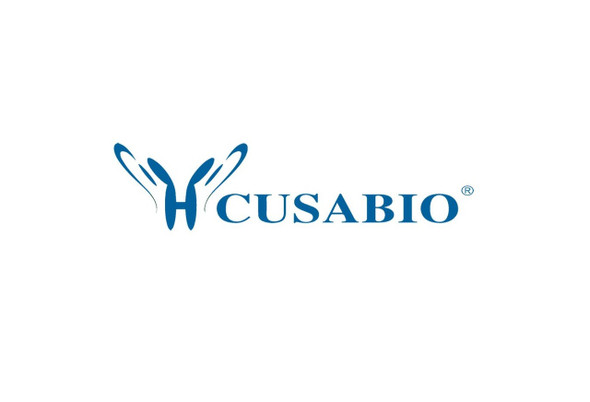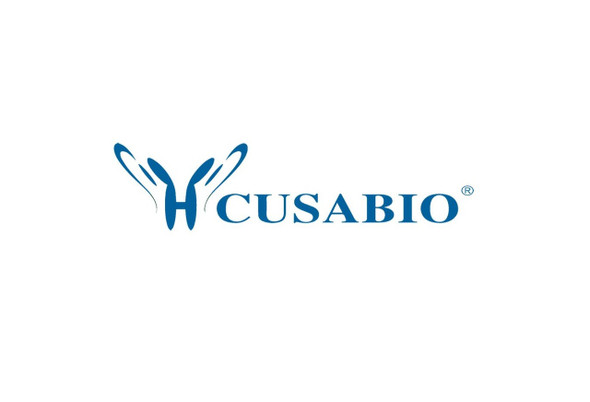Cusabio Rattus norvegicus Recombinants
Recombinant Rat CMRF35-like molecule 1 (Cd300lf), Partial | CSB-EP707077RA
- SKU:
- CSB-EP707077RA
- Availability:
- 3 - 7 Working Days
Description
Recombinant Rat CMRF35-like molecule 1 (Cd300lf), Partial | CSB-EP707077RA | Cusabio
Alternative Name(s): CD300 antigen-like family member F CD_antigen: CD300f
Gene Names: Cd300lf
Research Areas: Others
Organism: Rattus norvegicus (Rat)
AA Sequence: AQDPVTGPEEVSGYEQGSLTVWCRYGSWWKDYSKYWCRGPKRSSCEIRVETDASERLVKENHVSIRDDQTNFTFTVTMEDLRMSDAGIYWCGITKAGYDHMFKVHVSINPVPTTPTTTSTTTIFTVTTTVKETSTLSTQTSHYSDNRYDSGGVGDGNGFLDLS
Source: E.coli
Tag Info: N-terminal 10xHis-SUMO-tagged and C-terminal Myc-tagged
Expression Region: 19-181aa
Sequence Info: Extracellular Domain
MW: 38.3 kDa
Purity: Greater than 90% as determined by SDS-PAGE.
Relevance: Acts as an inhibitory receptor for myeloid cells and mast cells. Positively regulates the phagocytosis of apoptotic cells (efferocytosis) via phosphatidylserine (PS) recognition; recognizes and binds PS as a ligand which is expressed on the surface of apoptotic cells. Plays an important role in the maintenance of immune homeostasis, by promoting macrophage-mediated efferocytosis and by inhibiting dendritic cell-mediated efferocytosis. Negatively regulates Fc epsilon receptor-dependent mast cell activation and allergic responses via binding to ceramide and sphingomyelin which act as ligands. May act as a coreceptor for interleukin 4 (IL-4). Associates with and regulates IL-4 receptor alpha-mediated responses by augmenting IL-4- and IL-13-induced signaling. Negatively regulates the Toll-like receptor (TLR) signaling mediated by MYD88 and TRIF through activation of PTPN6/SHP-1 and PTPN11/SHP-2. Inhibits osteoclast formation. Induces macrophage cell death upon engagement.
Reference: "The status, quality, and expansion of the NIH full-length cDNA project: the Mammalian Gene Collection (MGC)." The MGC Project Team Genome Res. 14:2121-2127(2004)
Storage: The shelf life is related to many factors, storage state, buffer ingredients, storage temperature and the stability of the protein itself. Generally, the shelf life of liquid form is 6 months at -20?/-80?. The shelf life of lyophilized form is 12 months at -20?/-80?.
Notes: Repeated freezing and thawing is not recommended. Store working aliquots at 4? for up to one week.
Function: Acts as an inhibitory receptor for myeloid cells and mast cells. Positively regulates the phagocytosis of apoptotic cells (efferocytosis) via phosphatidylserine (PS) recognition; recognizes and binds PS as a ligand which is expressed on the surface of apoptotic cells. Plays an important role in the maintenance of immune homeostasis, by promoting macrophage-mediated efferocytosis and by inhibiting dendritic cell-mediated efferocytosis. Negatively regulates Fc epsilon receptor-dependent mast cell activation and allergic responses via binding to ceramide and sphingomyelin which act as ligands. May act as a coreceptor for interleukin 4 (IL-4). Associates with and regulates IL-4 receptor alpha-mediated responses by augmenting IL-4- and IL-13-induced signaling. Negatively regulates the Toll-like receptor (TLR) signaling mediated by MYD88 and TRIF through activation of PTPN6/SHP-1 and PTPN11/SHP-2. Inhibits osteoclast formation. Induces macrophage cell death upon engagement.
Involvement in disease:
Subcellular Location: Cell membrane, Single-pass type I membrane protein
Protein Families: CD300 family
Tissue Specificity:
Paythway:
Form: Liquid or Lyophilized powder
Buffer: If the delivery form is liquid, the default storage buffer is Tris/PBS-based buffer, 5%-50% glycerol. If the delivery form is lyophilized powder, the buffer before lyophilization is Tris/PBS-based buffer, 6% Trehalose, pH 8.0.
Reconstitution: We recommend that this vial be briefly centrifuged prior to opening to bring the contents to the bottom. Please reconstitute protein in deionized sterile water to a concentration of 0.1-1.0 mg/mL.We recommend to add 5-50% of glycerol (final concentration) and aliquot for long-term storage at -20?/-80?. Our default final concentration of glycerol is 50%. Customers could use it as reference.
Uniprot ID: Q566E6
HGNC Database Link: N/A
UniGene Database Link: UniGene
KEGG Database Link: KEGG
STRING Database Link: STRING
OMIM Database Link: N/A









